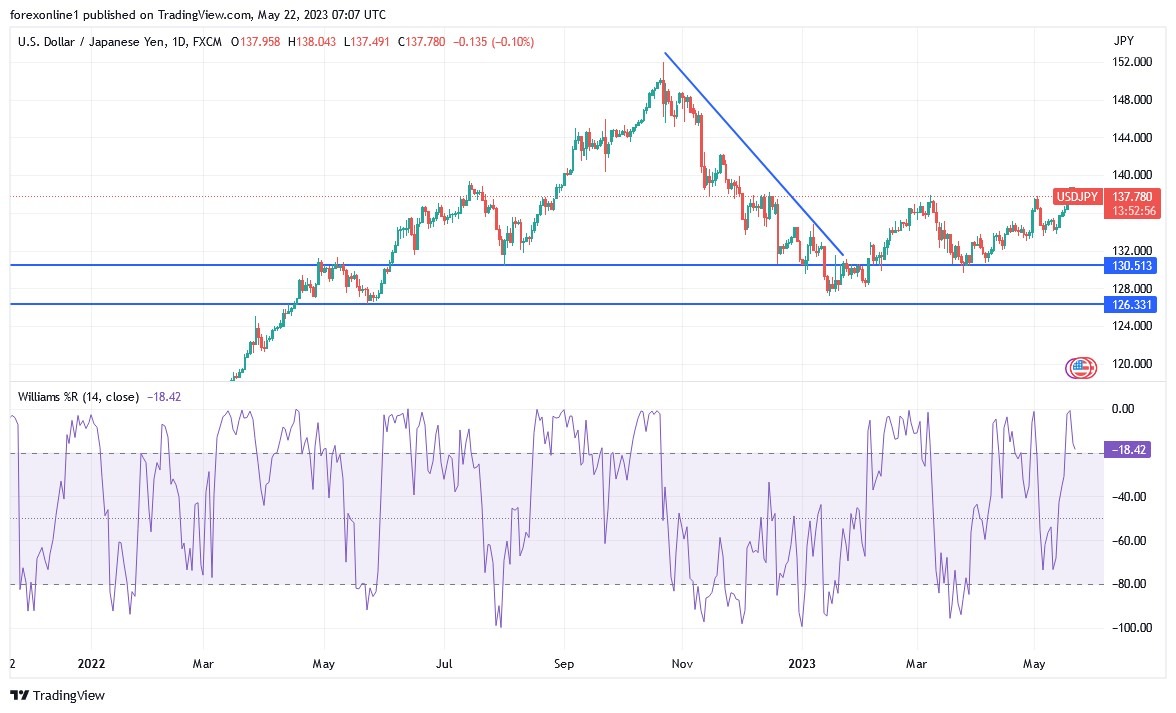By the end of last week's trading, the Japanese yen was trading relatively flat against some of the major currencies. As investors weighed recent inflation data in the world's third largest economy, which came higher than economists' expectations.
Is Tokyo suffering from an inflationary collapse?
The indicators are not good, and this may affect economic conditions. On the performance front of the USD/JPY currency pair, the bulls were stronger in control and pushed it towards the 138.75 resistance level, its highest in four and a half months, and closed the week's trading stable around 137.96.
On the economic front, according to the Ministry of Internal Affairs and Communications, Japan's annual inflation rate unexpectedly rose to 3.5% in April, up from 3.2% in March. On a monthly basis, the Consumer Price Index (CPI) jumped 0.6%, double the increase seen in the previous month. The acceleration of inflation was largely driven by transportation, clothing, furniture, education, and medical care. Prices were lower for shelter, utilities, and energy.
Japan's core inflation rate, which eliminates the volatile food index but conserves energy, also rose to 3.4%, up from 3.1% in the previous month. This matches market estimates of 3.4%. Overall, the inflation rate remained above the Bank of Japan's 2% target for last year. This has led to speculation that the Bank of Japan could end its quantitative easing program, which consists of significant stimulus. However, Bank of Japan Governor Kazuo Ueda has suggested that it is crucial to maintain very loose monetary policy measures until inflation slows to 2%.
All in all, it was a difficult week for the Japanese economy.
The GDP growth rate for the first quarter was just 0.4%, although it was higher than the 0% recorded in the fourth quarter. However, the GDP report presented a mixed picture of the national economy: capital expenditures increased by 0.9%, private consumption inflation increased by 0.6%, the price index rose to 2.1%, and external demand decreased by 0.3%.
The Japanese bond market was mostly higher, with the 10-year yield up 2 basis points, to 0.405%. The three-month yield fell 1 basis point to -0.17%, the two-year yield was flat at -0.056%, and the three-year yield fell 1.1 basis point to -0.035%.
In the United States, initial jobless claims last week exceeded the expected number of claims at 254 thousand with a count of 242 thousand, while continuing claims for the previous week exceeded 1.818 million claims with a count of 1.799 million. Elsewhere, the Philadelphia Fed Manufacturing Survey for May surpassed the expected reading of -19.8 with a reading of -10.4. US Retail Sales for April missed the estimated change of 0.7% with a change of 0.4% (MoM), while the Retail Sales Watch Group beat expectations by 0% with a change of 0.7%.
Technical analysis of the USD/JPY pair:
- In the near term, according to the performance of the hourly chart, it appears that the USD/JPY is trading within a bullish channel formation.
- This indicates a significant short-term bullish bias in market sentiment.
- Therefore, bulls will be looking for a bounce around 138.169 or higher at 138.410 resistance.
- The bears will be looking to ride the current wave of declines towards 137,644 or higher to 137,411 support.
On the long run, and according to the performance on the daily chart, it appears that the USD/JPY is trading within a sharply bullish channel formation. This indicates a strong long-term bullish bias in market sentiment. Therefore, the bulls will look forward to riding the current rally towards the 138.720 resistance or higher to the 139.752 resistance. On the other hand, the bears will target long-term profits at around 136.866 or below at 135.753 support.
Ready to trade our Forex daily forecast? We’ve shortlisted the best forex broker list for you to check out.




